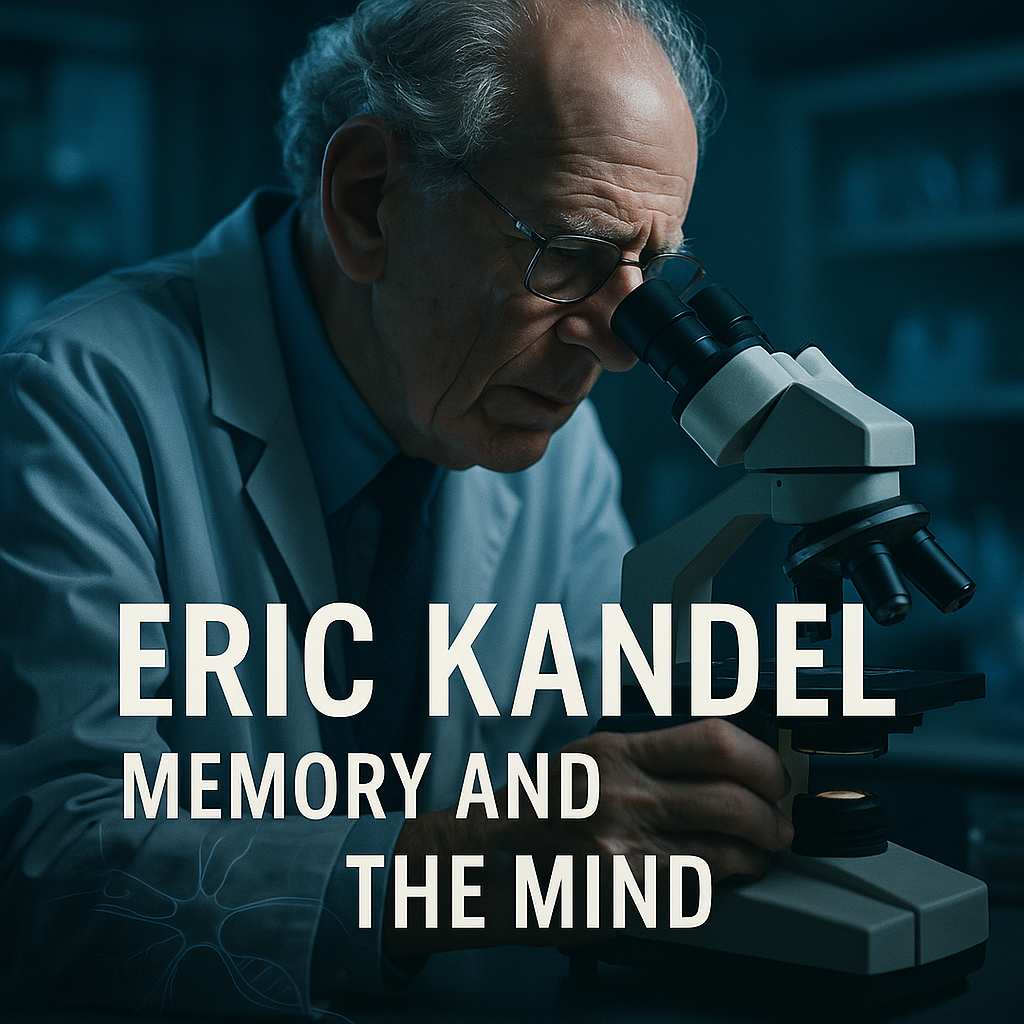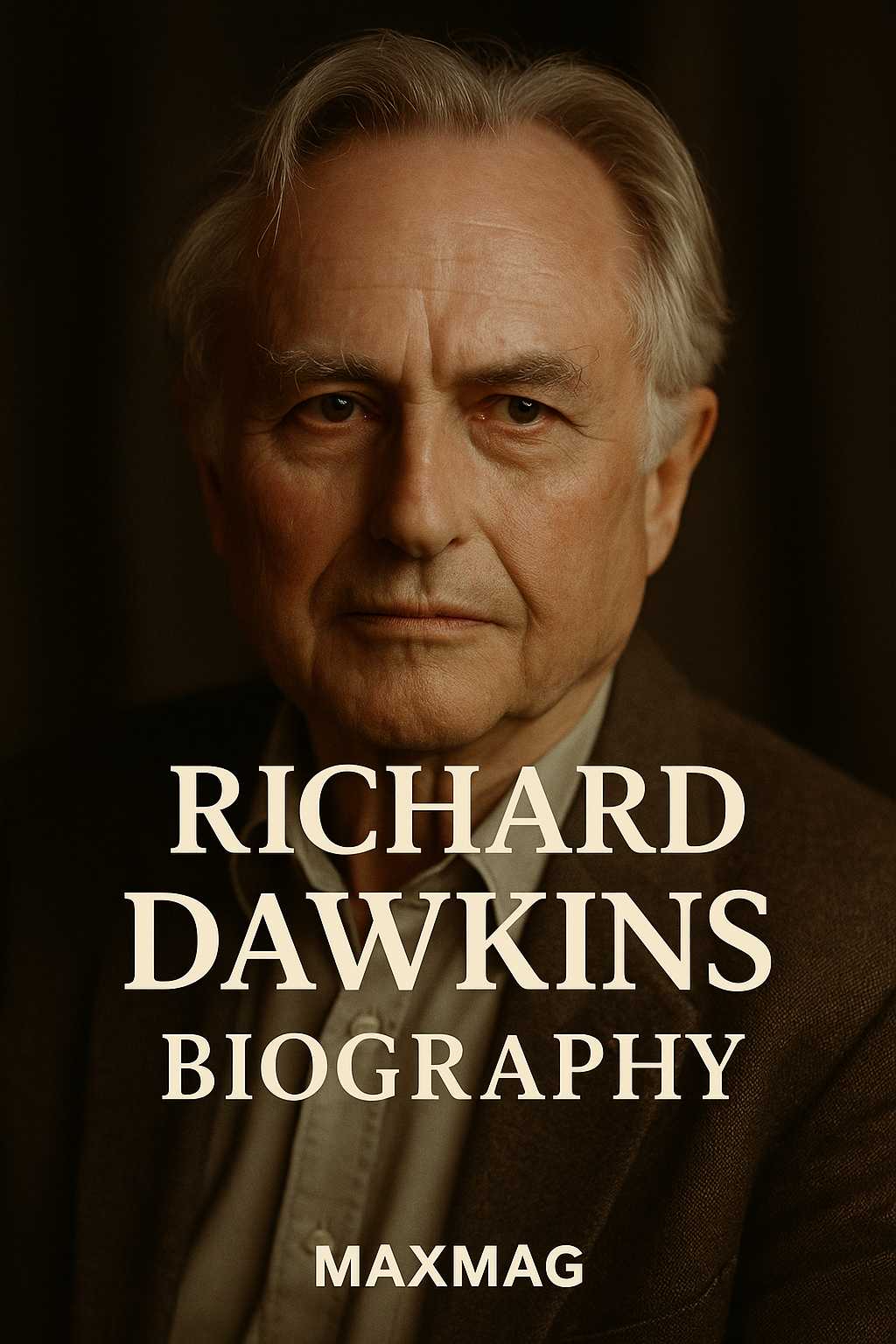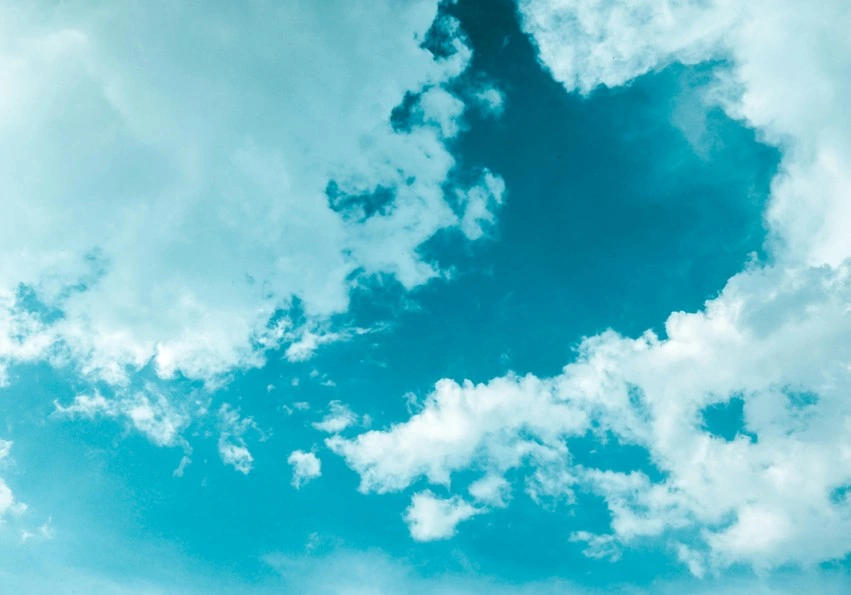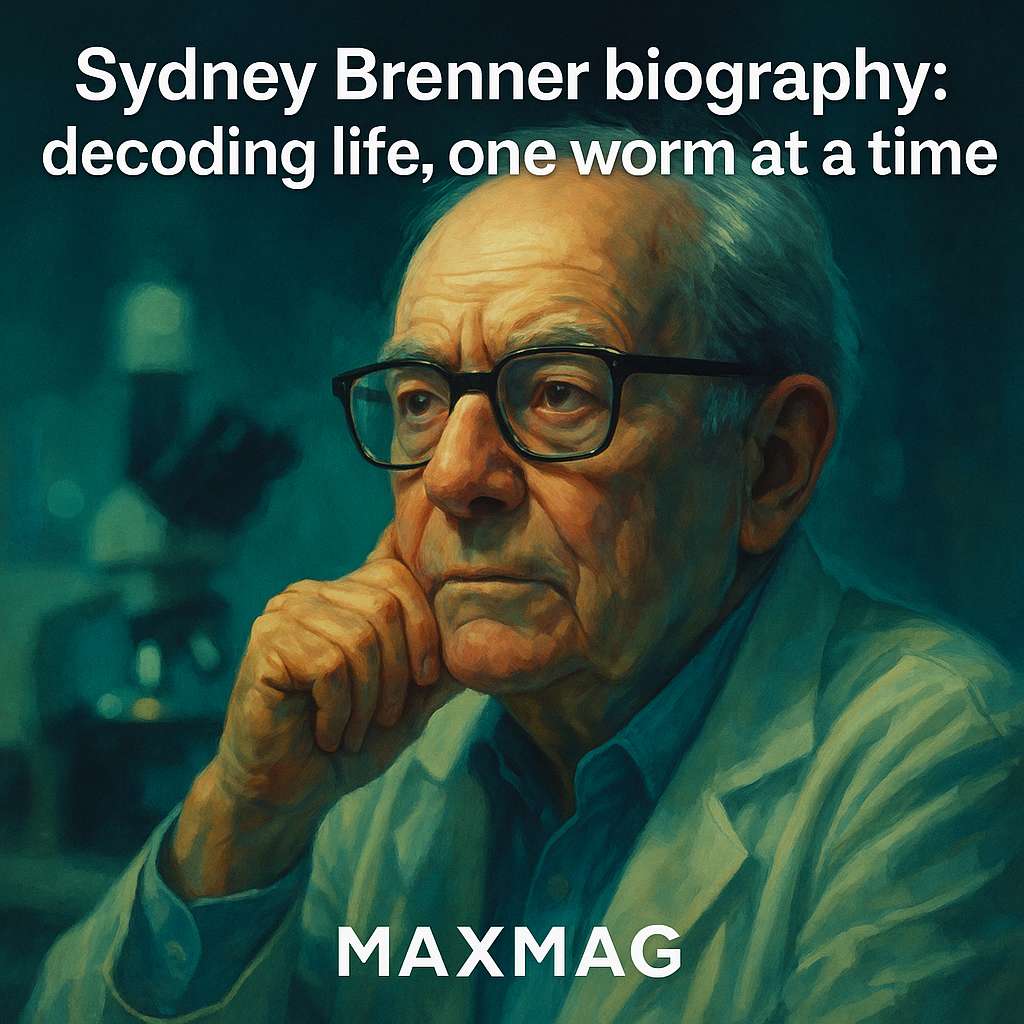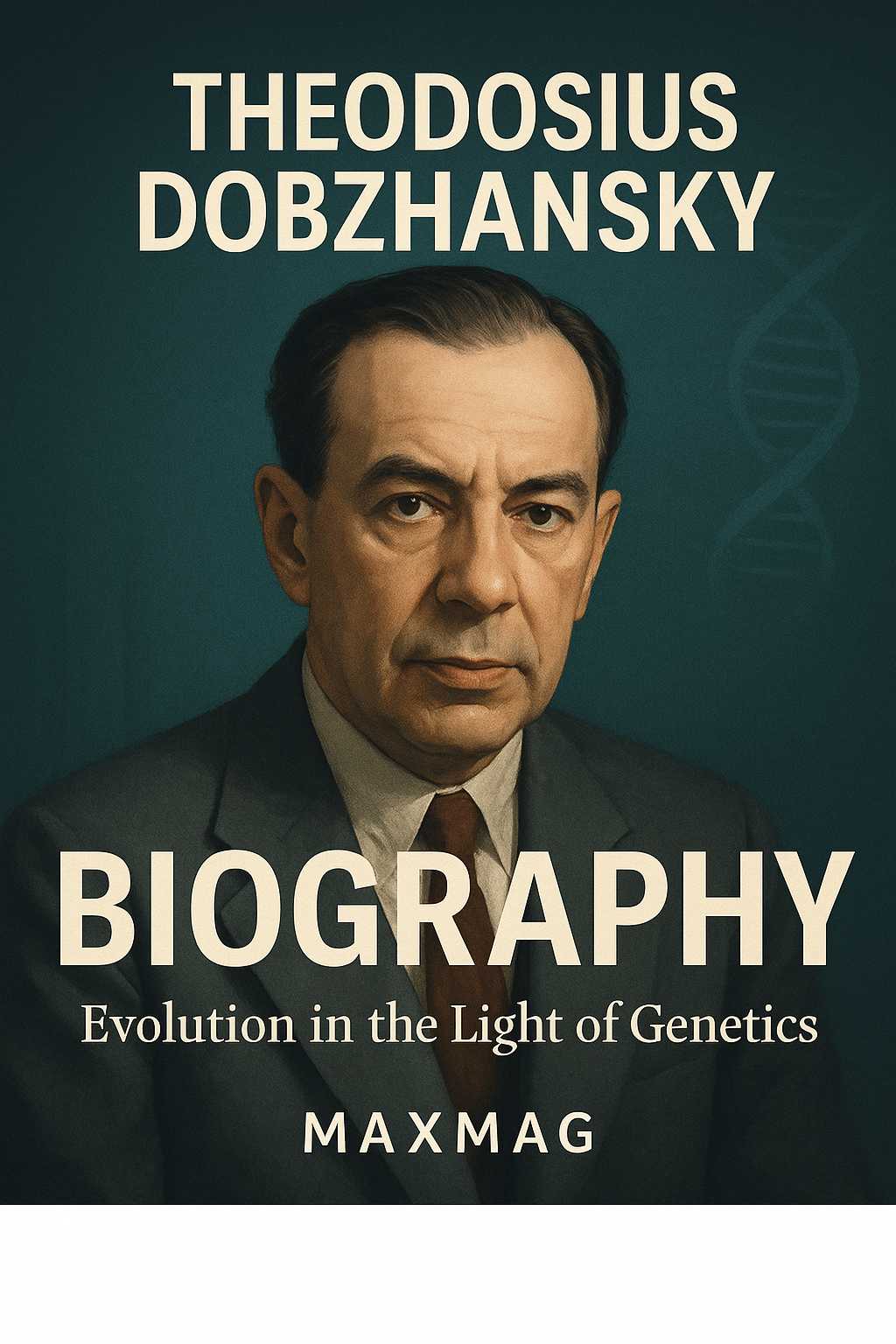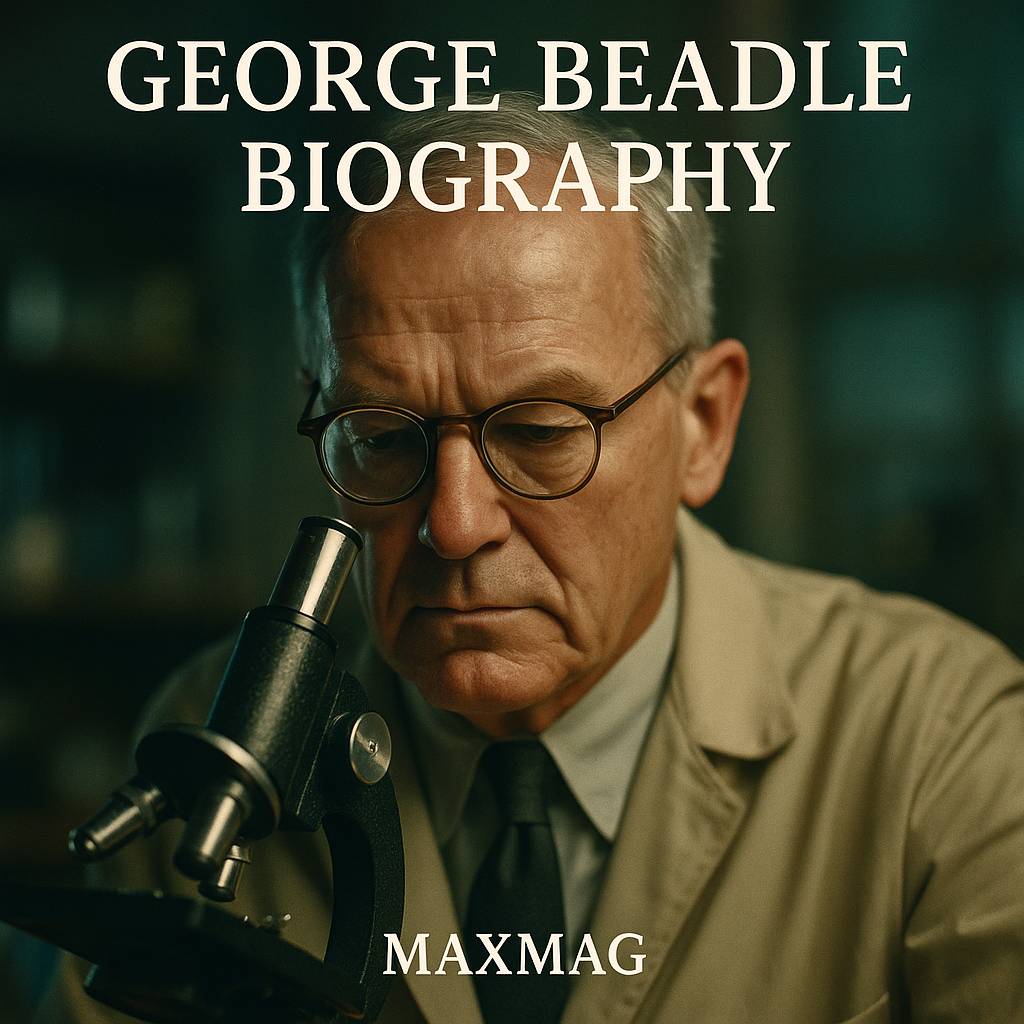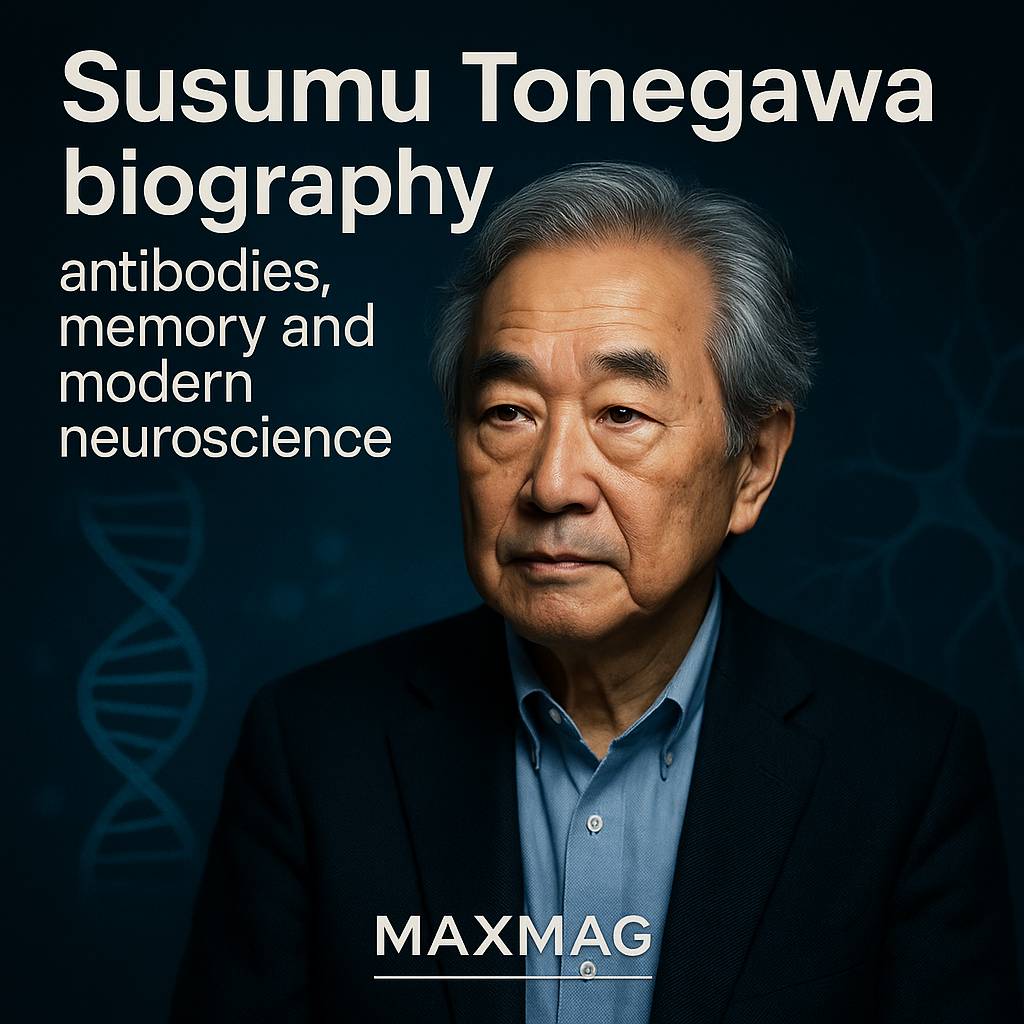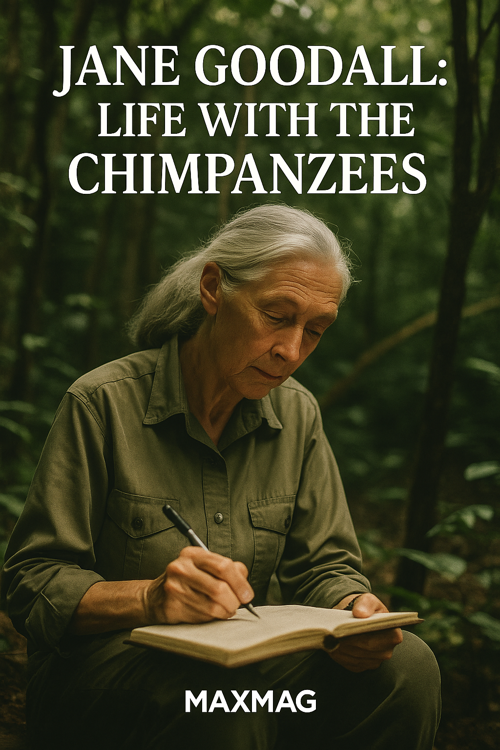
The Jane Goodall biography begins not in a laboratory, but with a little girl hiding in a chicken coop, determined to find out how eggs were laid. That stubborn curiosity, nurtured in wartime England, would eventually carry her to the forests of Tanzania, where she watched wild chimpanzees with a patience that reshaped modern science. Long before she became a primatology pioneer or a global environmental icon, Jane Goodall was simply a child who wanted to know how animals lived when humans weren’t watching.
Over nine decades, the story told in any Jane Goodall biography spans continents and eras: London during the Blitz, dusty Nairobi offices, remote hills around Lake Tanganyika, and packed auditoriums where she urged young people to believe that their actions matter. It is a tale of methodical observation and emotional connection, of scientific revolutions and unintended consequences, of a woman who refused to choose between data and empathy. To understand why her chimpanzee research still shapes debates about animal minds, conservation, and our own place in nature, it helps to walk slowly through the key moments of her life.
Jane Goodall Biography at a Glance
- Who: Dame Jane Goodall (1934–2025), British primatologist, ethologist and conservationist.
- Field and era: Long-term field studies of wild chimpanzees from 1960 onward; a defining figure in late 20th-century and early 21st-century science.
- Headline contributions: Documented tool use, meat eating and complex social behaviour in chimpanzees, helping erase the supposed sharp line between humans and other animals.
- Why she matters today: Her work underpins modern primatology and conservation biology, and her activism inspires global movements for wildlife protection, climate action and youth leadership.
Early Life and Education of Jane Goodall
Childhood stories that foreshadow the Jane Goodall biography
Valerie Jane Morris-Goodall was born on 3 April 1934 in London, just five years before the outbreak of the Second World War. Her father, Mortimer, was a businessman with a passion for motor racing; her mother, Margaret “Vanne” Joseph, wrote novels and nourished her daughter’s appetite for books and the outdoors. When war came, Jane, her mother and her sister moved to Bournemouth on England’s south coast, where seaside cliffs and gardens became her first field station.
In almost every Jane Goodall biography, one childhood episode stands out. At four, she vanished for hours, sending her family into a panic. They eventually found her in a henhouse, quietly watching a chicken lay an egg. She had wanted to see how it really happened, and she refused to come out until she’d solved the puzzle. It is an anecdote that reads like foreshadowing: the future primatologist already willing to sit still for hours, letting the animal set the pace of discovery.
Books were another gateway. Goodall devoured animal stories and, famously, Edgar Rice Burroughs’ Tarzan of the Apes. She later joked that Tarzan had married the wrong Jane, but the novel did something more serious: it lodged a dream that sounded absurd for a girl in mid-20th-century Britain. She would go to Africa, live with wild animals, and write books about them. Her mother did not laugh. Instead, she told her: “If you really want something, work hard, take every opportunity, and never give up.”
From secretarial college to the threshold of primatology
The path from Bournemouth to the forests of Gombe was anything but straightforward. Goodall did not come from a wealthy family, and university biology degrees were not an obvious option for a young woman in post-war Britain. After leaving school, she trained as a secretary in London. The job was pragmatic: it paid the bills and, crucially, it was a skill she could trade for proximity to her dream.
In her early twenties, she took that leap. Working as a waitress to save money, she bought a boat ticket to Kenya. There, in 1957, she wrangled an introduction to Louis Leakey, the renowned paleoanthropologist who was searching for clues about human origins. Leakey saw something unusual in this quiet, bright young woman with no formal scientific training but a lifetime of close observation of animals. He hired her as his assistant at the Coryndon Museum in Nairobi, setting in motion the chapter that every Jane Goodall biography returns to: Gombe.
Goodall’s lack of a university degree, often treated as a handicap, became part of her legend. For some, it underscored how closed early 20th-century science had been to women; for others, it highlighted the power of unconventional routes into research. In any case, it shaped her attitude to expertise. She never forgot that she had entered primatology from the side door, and she often encouraged young people to believe that passion and perseverance could, at times, compensate for credentials.
Jane Goodall Biography and the Birth of Her Big Ideas
Arriving in Gombe with notebooks and nerve
On 14 July 1960, 26-year-old Jane Goodall stepped off a boat at Gombe Stream, on the eastern shore of Lake Tanganyika in what is now Tanzania. With her came little more than a notebook, binoculars and her formidable mother—who had to join her at first because colonial authorities would not allow a young British woman to camp alone. It was here, in steep valleys and tangled forest, that the central drama of the Jane Goodall biography would unfold.
Those early months were harsh. The chimpanzees fled whenever she appeared, vanishing into the foliage long before she could study them. For weeks she saw little but glimpses of dark shapes. Many researchers would have abandoned the project. Instead, Goodall slowed down. She climbed to vantage points and scanned the hillsides for hours. She returned day after day, letting the chimpanzees learn that she posed no threat. A Smithsonian Science Education Center account captures the frustration of those early days, and the moment when patience began to pay off.
Naming chimpanzees and challenging scientific orthodoxy
From the outset, Goodall did something that upset traditional scientists: she named the chimpanzees. There was David Greybeard, with his distinctive white hair; Flo, a steady, nurturing matriarch; Passion, a formidable female whose behaviour would later shock the world. Naming them was not, for Goodall, sentimentality; it reflected her conviction that each chimp had a distinct personality and emotional life.
At the time, such thinking verged on heresy. Many animal behaviour textbooks warned firmly against “anthropomorphism”—assigning human traits to animals. But Goodall’s field notes, and later her books, were filled with descriptions of affection, jealousy, grief and ambition. Her work quietly asked: what if these words are not projections at all, but the best available description of what is actually happening in a chimpanzee community? That question would echo far beyond Gombe, into wider debates about animal minds and the history of ethology.

Key Works and Major Contributions of Jane Goodall
Discovering tool use and rewriting the Jane Goodall biography in real time
The turning point came in late 1960. Watching David Greybeard at a termite mound, Goodall saw him do something extraordinary: he stripped leaves from a twig, then used the modified stick to “fish” termites out of their nest and eat them. It was the first documented case of a wild animal not only using a tool, but deliberately making one. When Goodall relayed this to Leakey, he famously quipped that either they must redefine “tool”, redefine “human”, or accept chimpanzees as human.
This single observation, central to any Jane Goodall biography, cracked open a long-held assumption that toolmaking separated humans absolutely from other animals. It helped launch a new era of primate research in which chimpanzees were seen not as primitive humans, but as complex beings in their own right, whose behaviour might illuminate our evolutionary past. Subsequent studies found regional “cultures” of tool use and foraging techniques among chimp communities, reinforcing the idea that they transmit traditions across generations.
Meat eating, violence and the darker side of chimpanzee society
Another shock came when Goodall documented chimpanzees hunting and eating meat. Contrary to the prevailing view of chimps as gentle vegetarians, she watched coordinated hunts of colobus monkeys, with individuals taking on roles and sharing the carcass afterwards. These scenes forced biologists to rethink the evolutionary roots of hunting, cooperation and conflict.
Perhaps the most disturbing episode in Gombe’s history—and in the Jane Goodall biography—is what became known as the “Four-Year War”. In the 1970s, a once-unified community split into two groups, Kasakela and Kahama. Over several years, Kasakela males systematically attacked and killed members of the smaller Kahama group. The violence was targeted and prolonged, more reminiscent of human warfare than of random skirmishes. For Goodall, who had initially emphasised the chimps’ gentler qualities, these events were emotionally devastating. Scientifically, though, they opened a new line of inquiry into the roots of coalitionary violence in primates.
Books that carried a primatology pioneer to the wider public
Goodall’s scientific papers were crucial, but it was her books and films that carried her story to the wider world. Works such as In the Shadow of Man and Through a Window translated years of field observations into narratives that readers could inhabit. They told the chimpanzees’ stories in detail—births, alliances, grief—while carefully weaving in explanations of primate behaviour and evolutionary theory.
National Geographic documentaries helped cement her image: the slight woman with a ponytail, sitting on a slope with a notebook as chimpanzees moved around her. In the process, the Jane Goodall biography became not just a scientist’s story, but a cultural symbol of the idea that living with animals, rather than merely experimenting on them, could transform understanding.
Methods, Collaborations and Working Style
Long-term immersion as a radical method in field biology
Today, long-term field projects are standard in primatology. When Goodall began, they were rare. Many animal studies consisted of short visits, captive observations or controlled experiments. Goodall—and the other women Leakey would later send to study gorillas and orangutans—insisted on something different: staying for years, even decades, in one place and following individuals from birth to death.
This approach produced what might be the richest single dataset in the history of animal behaviour: generations of Gombe chimps observed over more than six decades. It allowed scientists to track family lines, personality differences and the long-term consequences of events like infanticide or drought. The Gombe Stream Research Centre notes that the project remains the world’s longest-running study of wild chimpanzees, with enormous implications for human evolution, psychology and health.
Collaborators, students and the making of a research community
Although the Jane Goodall biography often centres on one figure, Gombe was never a solo endeavour. Local Tanzanian field assistants, often named only briefly in scientific papers, developed deep expertise in tracking chimps and reading the forest. Collaborating scientists came and went, refining methods, bringing in new tools such as genetic sampling, and asking questions that Goodall’s original notebooks had not anticipated.
Over time, Gombe became a training ground for a generation of primatologists and conservation biologists. Some came to study specific topics—infant development, disease dynamics, communication—using Goodall’s observational framework as a starting point. Others arrived to critique it. That interplay between loyalty and scepticism is one reason the Jane Goodall biography is also, in part, a history of scientific self-correction.
Controversies, Criticism and Misconceptions
Anthropomorphism, banana feeding and the ethics of fieldwork
No serious Jane Goodall biography can ignore the controversies. From early on, critics argued that her habit of naming chimpanzees and describing their emotional lives risked blurring the line between observation and projection. Goodall defended her language, insisting that when a mother cradles her dead infant for days, grief is the most accurate term. Yet she also acknowledged, later in life, that field scientists must constantly check their assumptions.
Another major criticism concerns provisioning—feeding chimpanzees to habituate them to human presence. For years, Goodall and her team placed bananas at specific sites, both to lure chimps into view and to create regular observation points. Later research suggested that this practice may have altered natural behaviour, intensifying aggression and potentially increasing disease transmission. Modern primatology has largely abandoned provisioning, moving towards less intrusive methods. Analyses of her work note that while her findings on tool use and social complexity remain foundational, some patterns of violence and crowding observed at Gombe may have been exacerbated by human intervention.
Myths about “the woman who lived with chimpanzees”
Popular culture sometimes compresses Goodall’s story into a romantic image: the lone woman in the forest, in perfect harmony with nature. The reality was more complicated. She dealt with malaria, funding crises, bureaucratic battles and, later, the emotional toll of seeing forests shrink around Gombe. She did not “live with” the chimpanzees in the sense of joining their group; she remained a human observer, governed by research permits and practical limits.
Another misconception is that she turned her back on science when she shifted towards activism. In fact, the Jane Goodall biography shows a continuous thread: the same data that revealed chimpanzees’ richness also exposed the threats they faced—habitat loss, poaching, disease. Her move into conservation work was not a departure from primatology but an extension of its implications.

Impact on Primatology and on Wider Society
Transforming primatology and the history of animal behaviour studies
Within primatology, Goodall’s impact is hard to overstate. She helped move the field away from captive studies towards wild, long-term observation. Her detailed records of chimpanzee family life provided a powerful comparative mirror for human evolution, influencing debates in anthropology, psychology and neuroscience. A recent Smithsonian overview of her career notes that her discoveries reshaped not only primatology but also philosophical debates about animal rights and moral responsibility.
The ripple effects extend into the broader history of science. Goodall’s career challenged the assumption that rigorous research must be emotionally detached. Her insistence that one could be both a careful observer and a compassionate witness opened doors for later researchers studying elephants, whales and other highly social animals. The Jane Goodall biography thus belongs not only to primatology but also to a wider shift towards recognising animals as subjects of their own lives.
From primatology pioneer to global environmental advocate
By the mid-1980s, Goodall had left full-time life in Gombe. Alarmed by deforestation, the bushmeat trade and the conditions in some captive facilities, she began travelling almost constantly, giving lectures and meeting with community leaders and politicians. She founded the Jane Goodall Institute in 1977 to support research and conservation, and later created the Roots & Shoots programme to empower young people to carry out local projects for animals, people and the environment.
Her message combined scientific realism with an insistence on hope. In speeches, she often held up a stuffed toy chimpanzee—a stand-in for real animals under threat—and told stories of communities that had restored degraded land or shifted away from destructive practices. For many, especially younger audiences, the Jane Goodall biography was their first encounter with the idea that environmental action could be both urgent and joyful.
Personal Beliefs, Character and Private Life
A life shaped by resilience, optimism and moral conviction
Those who knew Goodall often speak about her calm presence and quiet steel. Even as she became a global figure, she tended to listen more than she spoke in small groups, asking questions about people’s lives and projects. She was not naïve about politics or power, yet she clung stubbornly to a belief that individuals can make a difference—what she called “the indomitable human spirit”.
The Jane Goodall biography includes personal struggles as well as public triumphs: long periods away from her son Hugo during his childhood while she was in the field or on the lecture circuit; the collapse of her first marriage; the grief of losing animals and colleagues. Friends recall that she often processed pain by returning to the natural world—walking alone in forests, or simply sitting in a garden listening to birds.
Family, relationships and the question of sacrifice
Goodall married wildlife photographer Hugo van Lawick in 1964. Their son, Hugo (known as “Grub”), spent part of his early life at Gombe, an experience that left its own complex mark. Balancing motherhood with research and later with a gruelling travel schedule was never simple. In interviews, Goodall acknowledged the strains, but she also rejected the idea that women scientists should be asked to justify their choices more than men.
Later in life, as the Jane Goodall biography shifted into its elder-stateswoman chapter, she became a kind of honorary grandmother to many of the young people in the Roots & Shoots network. Photographs from events show her surrounded by teenagers and children, often holding her trademark soft toy chimp. For them, she embodied a combination of scientific authority and accessible warmth rarely seen in public life.
Later Years and Final Chapter of Jane Goodall
Relentless travel and a messenger of peace
In her seventies and eighties, Goodall’s schedule would have exhausted someone half her age. She spent much of each year on the road, sometimes visiting a different country every few days. She spoke at universities, parliaments and grassroots gatherings, warning about climate change, biodiversity loss and the ethical treatment of animals. She served as a UN Messenger of Peace and received honours around the world, including being made a Dame of the British Empire in 2003.
Even as she moved further from the daily routines of data collection, Goodall kept in close touch with research at Gombe and other field sites. She remained fascinated by new technologies—such as genetic sequencing and satellite imagery—that built on her early observations, extending the reach of primatology pioneer work she had begun with binoculars on a hillside.
The end of a remarkable life and the closing pages of the Jane Goodall biography
On 1 October 2025, Jane Goodall died in California at the age of 91, while on a speaking tour. Reports from the Jane Goodall Institute and international media emphasised that she had remained active until the end, still carrying her message of “reason for hope” to audiences around the world. A widely shared obituary described her as a pioneering primatologist and environmental advocate whose work transformed ethology and inspired generations.
Her passing triggered an outpouring of tributes—from scientists who built their careers on the foundations she laid, to heads of state, to schoolchildren who had planted trees in her honour. Memorial events took place from Gombe to major cities, many framing the Jane Goodall biography as a story not only of one woman’s achievements, but of a global shift in how we think about our relationship with other species.
The Lasting Legacy of the Jane Goodall Biography
Changing how we see animals—and ourselves
Jane Goodall’s legacy reaches beyond the specific facts of chimpanzee tool use or social hierarchies. She helped dismantle a mental wall that separated humans from the rest of the animal kingdom. By documenting personalities, relationships and emotions among chimpanzees, she forced science and the wider public to confront continuities between our species and others. A recent Smithsonian account of her career notes that her discoveries reshaped not only primatology but also philosophical debates about animal rights and moral responsibility.
The Jane Goodall biography also changed who could be a scientist. Her success encouraged more women to enter field biology and related disciplines, pushing back against stereotypes that had kept them out. Alongside colleagues such as Dian Fossey and Biruté Galdikas, she formed part of an informal vanguard that diversified the voices shaping 20th-century science. Major outlets such as The New York Times science desk have highlighted how her life story continues to influence debates about conservation, ethics and gender in modern research culture.
From forests to classrooms: a living legacy
Goodall’s influence persists in multiple registers. In Gombe, researchers continue to follow the descendants of the chimpanzees she first named, building on a dataset that now spans more than five generations. In classrooms, children learn about her life as an example of how curiosity and perseverance can transform a field. Youth-led projects under the Roots & Shoots banner tackle issues from plastic pollution to climate justice, often citing her as their inspiration.
For many readers, encountering a Jane Goodall biography—whether in a schoolbook, a documentary, or a detailed magazine feature—is a first invitation to think seriously about what we owe to other species. Her story suggests that science and empathy need not be rivals. Instead, they can reinforce one another, guiding us towards a more honest, less arrogant place in the living world.
Conclusion: Why the Jane Goodall Biography Still Matters
Looking back, what stands out about Jane Goodall is not only the novelty of her discoveries, but the consistency of her stance. From the henhouse in Bournemouth to the hills of Gombe and the crowded lecture halls of her later years, she approached animals with a mix of rigor and respect. The Jane Goodall biography reminds us that paying close attention—to how a chicken lays an egg, how a chimp fashions a tool, how a forest regrows after logging—can transform both knowledge and conscience.
In an era of accelerating climate change and mass extinction, her life story carries a stark message and a stubborn hope. It shows how one person, starting with no special advantages beyond curiosity and perseverance, can trigger a cascade of change across science, culture and policy. Understanding the Jane Goodall biography is therefore not just about honouring a primatology pioneer; it is about recognising that our future depends on whether we can, as she urged, see humans as part of, not apart from, the rest of life on Earth.
Frequently Asked Questions about Jane Goodall biography
Q1: What makes the Jane Goodall biography so important in the history of science?
Q2: How did Jane Goodall begin her career as a primatologist?
Q3: What were Jane Goodall’s most famous scientific discoveries?
Q4: Why was Jane Goodall criticised by some scientists?
Q5: How did Jane Goodall move from research into global conservation activism?
Q6: What is Jane Goodall’s legacy today?

